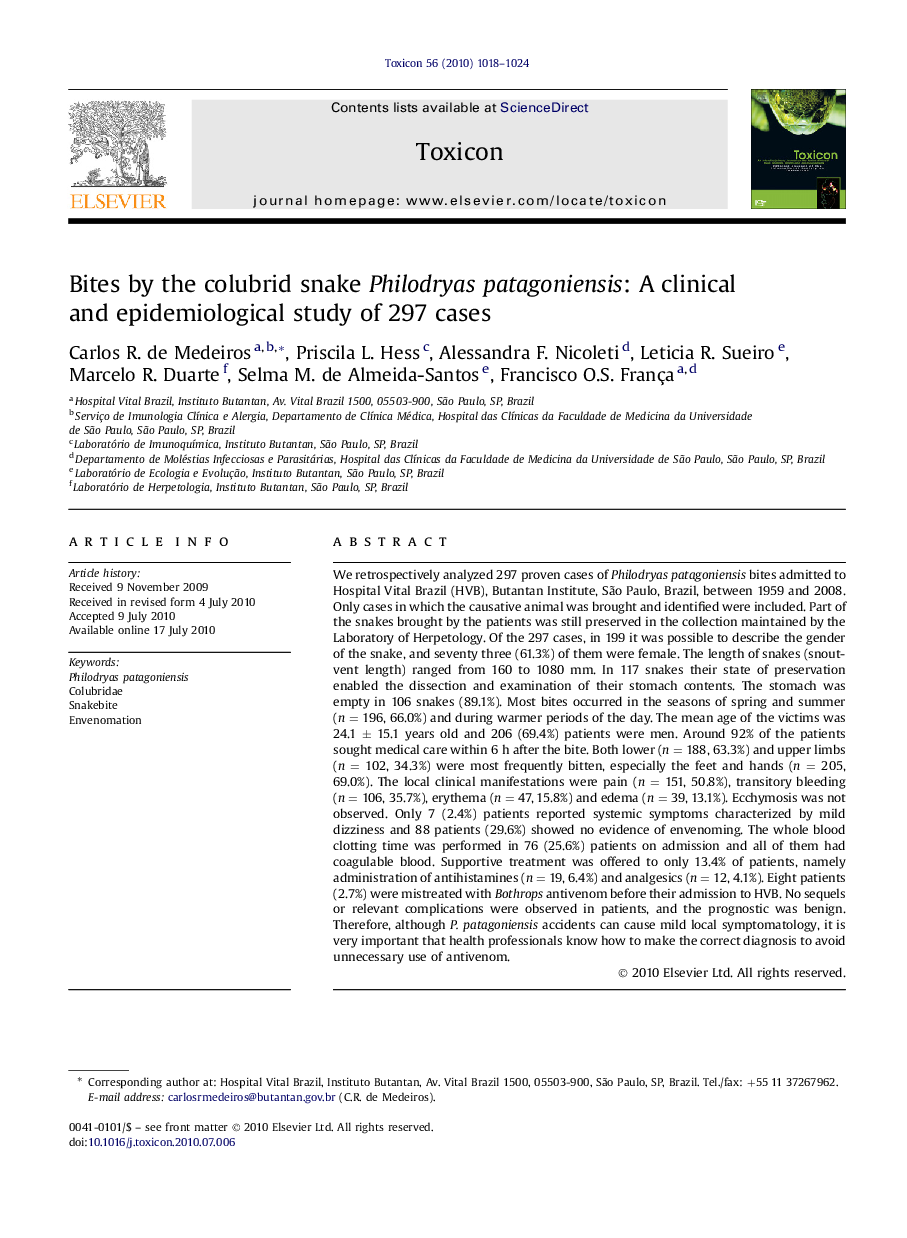| کد مقاله | کد نشریه | سال انتشار | مقاله انگلیسی | نسخه تمام متن |
|---|---|---|---|---|
| 2065537 | 1076927 | 2010 | 7 صفحه PDF | دانلود رایگان |

We retrospectively analyzed 297 proven cases of Philodryas patagoniensis bites admitted to Hospital Vital Brazil (HVB), Butantan Institute, São Paulo, Brazil, between 1959 and 2008. Only cases in which the causative animal was brought and identified were included. Part of the snakes brought by the patients was still preserved in the collection maintained by the Laboratory of Herpetology. Of the 297 cases, in 199 it was possible to describe the gender of the snake, and seventy three (61.3%) of them were female. The length of snakes (snout-vent length) ranged from 160 to 1080 mm. In 117 snakes their state of preservation enabled the dissection and examination of their stomach contents. The stomach was empty in 106 snakes (89.1%). Most bites occurred in the seasons of spring and summer (n = 196, 66.0%) and during warmer periods of the day. The mean age of the victims was 24.1 ± 15.1 years old and 206 (69.4%) patients were men. Around 92% of the patients sought medical care within 6 h after the bite. Both lower (n = 188, 63.3%) and upper limbs (n = 102, 34.3%) were most frequently bitten, especially the feet and hands (n = 205, 69.0%). The local clinical manifestations were pain (n = 151, 50.8%), transitory bleeding (n = 106, 35.7%), erythema (n = 47, 15.8%) and edema (n = 39, 13.1%). Ecchymosis was not observed. Only 7 (2.4%) patients reported systemic symptoms characterized by mild dizziness and 88 patients (29.6%) showed no evidence of envenoming. The whole blood clotting time was performed in 76 (25.6%) patients on admission and all of them had coagulable blood. Supportive treatment was offered to only 13.4% of patients, namely administration of antihistamines (n = 19, 6.4%) and analgesics (n = 12, 4.1%). Eight patients (2.7%) were mistreated with Bothrops antivenom before their admission to HVB. No sequels or relevant complications were observed in patients, and the prognostic was benign. Therefore, although P. patagoniensis accidents can cause mild local symptomatology, it is very important that health professionals know how to make the correct diagnosis to avoid unnecessary use of antivenom.
Journal: Toxicon - Volume 56, Issue 6, November 2010, Pages 1018–1024